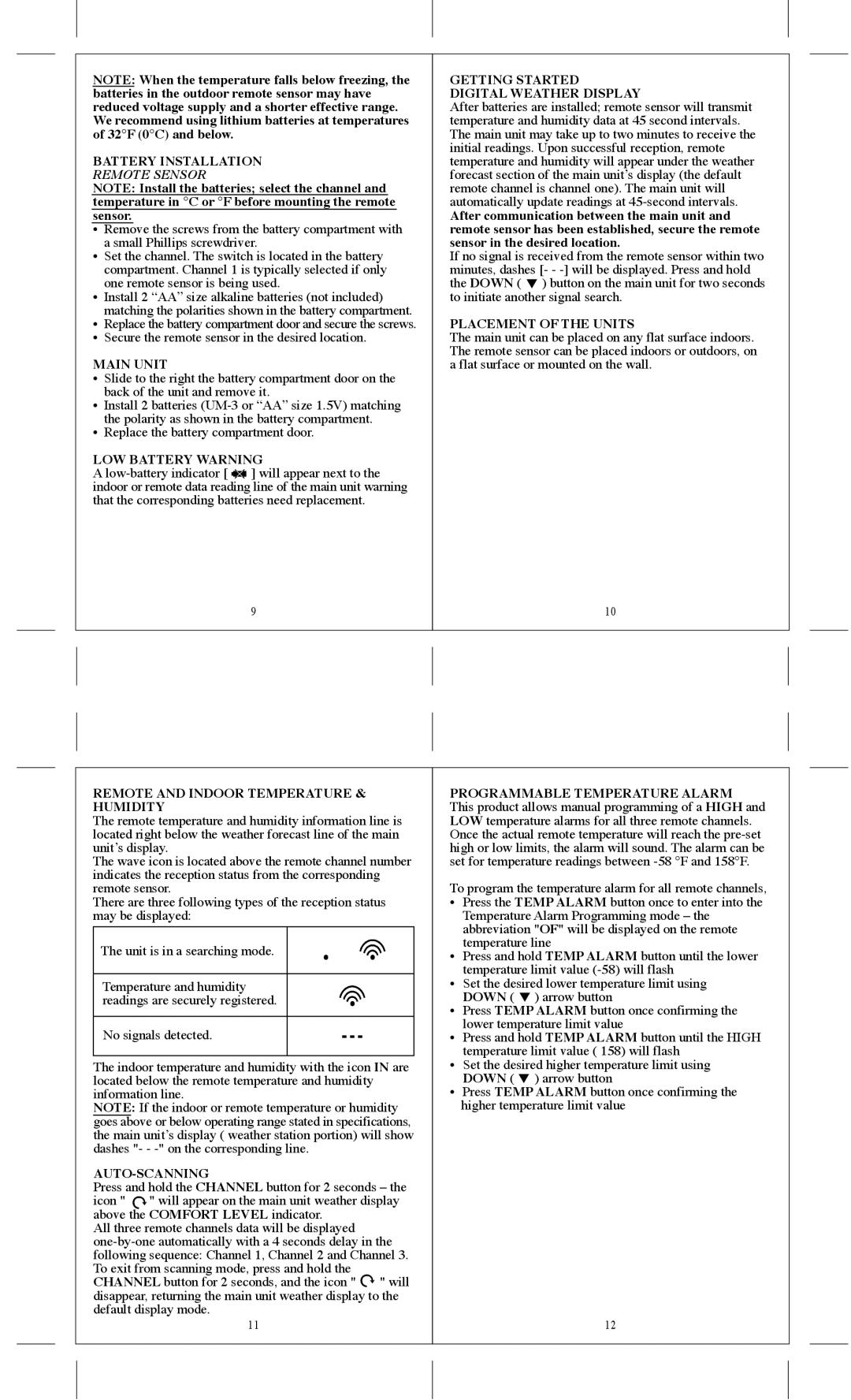TC682EL, TS33C specifications
The Honeywell TS33C and TC682EL are advanced temperature and humidity sensors that showcase the brand’s commitment to innovation and precision in environmental monitoring. These devices are engineered for a wide range of applications, including HVAC systems, industrial processes, and smart building solutions. The TS33C and TC682EL excel in delivering accurate and reliable measurements, making them essential tools for climate control and energy efficiency.One of the standout features of the Honeywell TS33C sensor is its high accuracy. With a temperature measurement range from -40°C to 125°C and a humidity range from 0% to 100% relative humidity, it is capable of operating effectively in diverse environments. The TS33C is equipped with a robust sensing element that minimizes temperature drift, ensuring consistent performance over time. Moreover, it offers rapid response times, which is crucial for applications where immediate readings are necessary.
The TC682EL model, on the other hand, focuses on providing enhanced connectivity and integration capabilities. It features a versatile output configuration that includes analog voltage, current, and digital interfaces, making it compatible with a variety of building automation and control systems. This flexibility allows users to incorporate the TC682EL seamlessly into existing setups without the need for extensive retrofitting.
Both models utilize Honeywell's advanced proprietary algorithms to compensate for environmental factors that can affect sensor performance. This technology ensures that readings remain accurate even in fluctuating conditions. Additionally, the sensors feature robust construction, which enhances their durability and reliability in harsh environments, making them suitable for both indoor and outdoor installations.
In terms of energy efficiency, the TS33C and TC682EL contribute to optimized system performance. By providing real-time data on temperature and humidity levels, they enable automated adjustments that lead to significant energy savings. These devices can play a critical role in achieving sustainability goals, as they support the efficient management of resources in various facilities.
Furthermore, Honeywell emphasizes ease of installation and maintenance in the design of the TS33C and TC682EL. The sensors are lightweight and compact, allowing for flexible mounting options. Their user-friendly interfaces facilitate straightforward calibration and configuration, minimizing downtime and ensuring that users can quickly deploy the devices in their operational environments.
In conclusion, the Honeywell TS33C and TC682EL sensors represent cutting-edge technology in environmental monitoring. With their high accuracy, flexibility in connectivity, advanced algorithms, and focus on energy efficiency, they are invaluable assets for modern HVAC systems and smart building initiatives. These features highlight Honeywell's dedication to providing reliable solutions that meet the evolving needs of commercial and industrial sectors.

